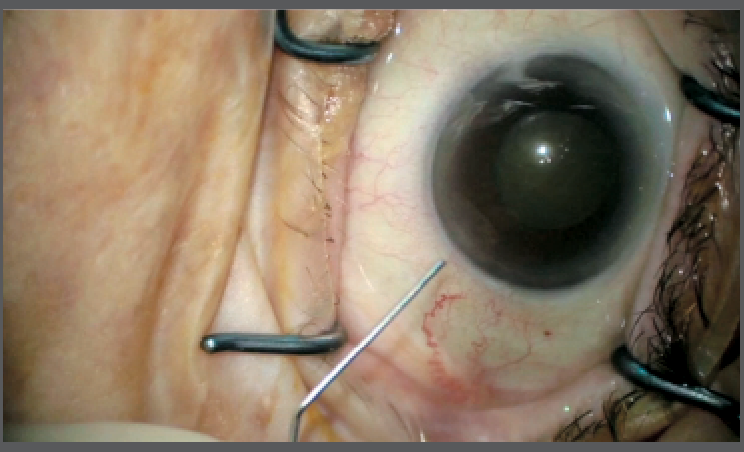Publication
Article
Digital Edition
Strategies for small pupil phaco
Author(s):
Small pupils usually travel in clusters with other surgical challenges. Kendall E. Donaldson, MD, MS, explains how surgeons may better manage small pupils during phacoemulsification by employing all tools and techniques available to them.

Surgeons should use all tools and techniques available to better manage small pupils. (Image courtesy of Kendall E. Donaldson, MD, MS)
When managing a small pupil during cataract procedures, surgeons should take their time and use all the tools in their armamentarium for successful outcomes, said Kendall E. Donaldson, MD, MS.
Dr. Donaldson shared the example of a normal-sized versus small pupil and what would happen if the size of each one decreased by 2.5 mm. For a 6-mm pupil, that change decreases the operative field by 66% versus 50% for an 8.3-mm pupil.
“Not being able to see can complicate cataract surgery,” said Dr. Donaldson, associate professor of ophthalmology, Bascom Palmer Eye Institute, University of Miami Miller School of Medicine, Miami.
Small pupils often are not the only problem a surgeon will manage in these complicated cases.
“There’s often intraoperative floppy iris syndrome, pseudoexfoliation, diabetes, uveitis, longer surgery, prior surgery or trauma, and use of the femtosecond laser,” Dr. Donaldson said.
Always examine the other eye as well for potential small pupil issues, she added.
Dr. Donaldson addressed the research that reported that femtosecond laser (FLACS) use could lead to a smaller pupil.
“Fortunately, 96% of the time, that’s reversible with intracameral, preservative-free phenylephrine followed by a dispersive viscoelastic. However, about 4% of the time, it’s not really reversible,” she cautioned.
One pearl she suggested is to avoid femtosecond laser use in higher-risk patients with pre-existing small pupils.
Dr. Donaldson shared the example of cataract surgery in a 4.7-mm pupil with a history of floppy iris syndrome. Uneventful lens fragmentation and capsulotomy were performed, but three minutes later, the pupil went down to 2.5 mm. It did not improve with the use of lidocaine or a dispersive viscoelastic material.
“I did have to put in a Malyugin ring in this case. I would recommend after you make a primary wound, put viscoelastic beneath the iris and lift up the iris to safely place the Malyugin ring without grabbing the edge of the capsule in these FLACS cases,” she said.
Surgeons have a number of additional tools and techniques they can use, including:
> Pretreating with nonsteroidal anti-inflammatory drugs
> Use of ketolorac/phenylephrine injection 1%/0.3% (Omidria, Omeros Corp.)
> Various rings and hooks
> Phaco chop, as discussed by David Chang, MD, San Francisco. “He taught us that chopping can put less energy into the eye with minimal movement in anterior chamber. It can be done with small pupils very safely to minimize lenticular movement, especially in pseudoexfoliation syndrome where we don’t want to have extra stress on the zonules. Phaco chop is an excellent technique in these cases,” Dr. Donaldson said.
Kendall E. Donaldson, MD, MS
e: kdonaldson@med.miami.edu
This article was adapted from Dr. Donaldson’s presentation at the 2017 meeting of the American Academy of Ophthalmology. Dr. Donaldson is a consultant for Alcon Laboratories, Allergan, Johnson & Johnson Vision, and other ophthalmic companies.
Newsletter
Don’t miss out—get Ophthalmology Times updates on the latest clinical advancements and expert interviews, straight to your inbox.





